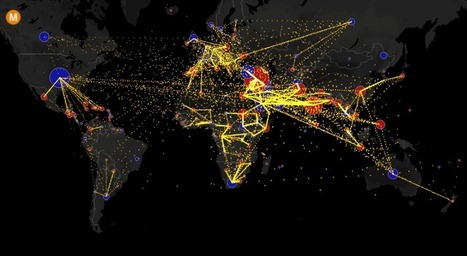Visualizing the flow of the world's migrants from country to country.
Based on data from the U.N. Population Division, this map shows the estimated net migration (inflows minus outflows) by origin and destination country between 2010 and 2015.
Blue circles = positive net migration (more inflows). Red circles = negative net migration (more outflows). Each yellow dot represents 1,000 people.
Hover over a circle to see that country’s total net migration between 2010 and 2015. Click a circle to view only the migration flows in and out of that country.
For more info about this map, read the article, All the World’s Immigration Visualized in 1 Map.
Tags: migration, USA, mapping, population, unit 2 population.



 Your new post is loading...
Your new post is loading...











Migration at a global scale changes places
Syllabus
Students investigate reasons for and effects of internal migration in Australia and another country, for example:
Students investigate the reasons for and effects of international migration to Australia, for example:
Geoworld 9 NSW
Chapter 8: Migration changes Australia and the USA
8.1 Migration: people own the move
8.2 Australia: destination nation
8.3 Where do immigrants settle
8.4 Culturally diverse australia: trends in migration
8.8 Australians are mobile people
8.9 Mobile indigenous populations
8.19 Lifestyle migration
8.11 The power of resources: the Pilbara
8.12 Migration changes the USA
Geothink